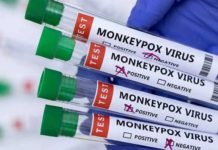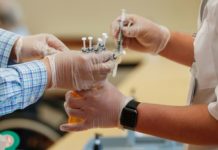Trophos and AFM-Telethon (The French Muscular Dystrophy Association) today announce that data from the pivotal clinical trial of Trophos’ lead product candidate olesoxime in spinal muscular atrophy (SMA) will be presented during the 66th American Academy of Neurology (AAN) annual meeting to be held in Philadelphia, PA, USA, from April 26 to May 3 2014. The data shows that patients treated with olesoxime were able to maintain motor function over the two-year period of the study and that typical health complications associated with SMA occurred less frequently than in patients treated with a placebo, leading to better well being.
SMA is an autosomal recessive genetic disease that affects the motor neurons of the voluntary muscles used for activities such as crawling, walking, head and neck control and swallowing. SMA affects approximately 20,000 people worldwide. One in every 6,000 babies is born with SMA. It is the number one genetic cause of death in children under the age of two.
The new data presented at AAN is from the recently completed international, double-blind, placebo-controlled study involving 165 type II and non-ambulatory type III SMA patients, ranging in age from 3 to 25 years old.
The results show that olesoxime treatment preserved motor function for two years using the Motor Function Measure scale (MFM) D1+D2 as the primary endpoint. The MFM is a standardized neuromuscular disease-specific functional scale.
In contrast, patients in the placebo arm of the study experienced a loss of motor function starting from a mean score of 39 per cent at baseline to 37.1 per cent after two years. The mean loss of 1.9 points in motor function over the two-year study period confirms that the natural disease progression results in approximately 1 per cent per year loss of motor function in SMA patients.
The difference in favor of olesoxime at 24 months is statistically significant (p equals 0.038) while the overall treatment effect on motor function measured at four visits during the study was highly significant (p equals 0.0045). Interestingly, the effect of olesoxime could be detected even within six months following initiation of treatment. The results observed in olesoxime treated patients are consistent with the working hypothesis set up when designing the study.
On top of this statistically significant result on the primary endpoint, motor function was also measured with the Hammersmith Functional Motor Scale (HFMS) as a secondary endpoint. HFMS changes over a 21-month period showed a similar positive trend and a significant effect of olesoxime when comparing response rates (i.e. the percentage of patients who maintained function during the trial), with 48 per cent in the olesoxime arm versus only 28 per cent in the placebo arm (p equals 0.015).
Data analyses considering age, gender, SMA type or country as covariates show these variables have no influence on the results.
The safety of olesoxime was confirmed in the study. Moreover, even though the trial was not designed to address the point, data related to typical SMA complications showed a clear improvement and less frequent disease-associated events such as lower respiratory tract infection or spine surgery to treat scoliosis in patients treated with olesoxime.
Patients were randomly assigned to treatment (10 mg/kg olesoxime dosed daily as a liquid oral suspension or matching placebo in a 2:1 ratio). They were evaluated every three months for two years. The primary outcome measure was the change in motor function at two years using the MFM. The secondary outcome measures included an additional scale, the Hammersmith Functional Motor Scale (HFMS) for non-ambulant SMA patients, as well as electromyography measures, pulmonary function, patient-reported outcomes such as clinical global impression (CGI), quality of life measures (PedsQL), typical SMA complications and product safety.
The data from the pivotal study, ‘A Phase II study to assess safety and efficacy of olesoxime (TRO19622) in 3-25 year old Spinal Muscular Atrophy (SMA) patients’, will be presented as part of the Emerging Science Poster Presentations: Poster Session III (1500 – 1830) on Tuesday, April 29, 2014. P3.344.
“Analysis of the data from the pivotal trial of olesoxime provides further evidence of its neuroprotective effect, with a statistically significant impact on maintenance of motor function for the two years of the trial compared with placebo,” said Dr. Enrico Bertini, the principle investigator of the study. “Results from secondary endpoints were also promising. The olesoxime-treated group experienced fewer adverse events caused by the disease itself. SMA is a devastating condition which, even in its less severe forms, leads to progressive muscle wasting and the loss of mobility and motor function. Olesoxime has the potential to be the first ever treatment approved especially for SMA patients.”
“The efficacy of olesoxime in patients with SMA demonstrated in this pivotal trial is highly encouraging. On the basis of these results we intend to file for approval in both the US and Europe as soon as possible,” said Christine Placet, chief executive officer at Trophos.
Dr. Rebecca Pruss, chief scientific officer at Trophos, said: “Evidence of the neuroprotective effect of olesoxime provides real hope for SMA patients. It also increases our confidence in its potential in other indications as well as validating Trophos’ discovery platform and the promise of phenotypic screening in drug discovery. We are particularly grateful for the long-term financial support and commitment of AFM-Telethon and our other shareholders, as well as to the patients, their families and the clinicians who have enabled us to complete this pivotal trial.”
Laurence Tiennot-Herment, president of AFM-Telethon affirmed “AFM-Telethon is proud to have the opportunity to present the results of olesoxime in SMA, one of the most frequent neuromuscular diseases affecting children. This is the culmination of 14 years of accompanying Trophos in the discovery and development of this new molecule.”
About SMA
The mutated gene responsible for SMA is carried by up to 20 million potential parents in the US and EU. Most of them are unaware that they are carriers. SMA patients are divided into four subtypes depending on disease onset and severity, but they all suffer from degeneration of motor neurons controlling voluntary muscles, with proximal limb and trunk muscle weakness leading to respiratory distress and, in the most severe cases, death.
About olesoxime
Olesoxime (TRO19622) is the lead compound in Trophos’ proprietary cholesterol-oxime family of compounds that target and preserve mitochondrial integrity and function in stressed cells. Preclinical studies have demonstrated that olesoxime promotes the function and survival of neurons and other cell types under disease-relevant stress conditions. It has been shown to be active in multiple preclinical neurodegeneration models including the NSE-Cre F7/F7 model of SMA.
Trophos has been granted ‘Orphan Medicinal Product’ designation for olesoxime for the treatment of SMA by the European Commission and orphan drug designation by the US Food and Drug Administration.
About Trophos
Trophos is a clinical stage pharmaceutical company developing innovative therapeutics for indications with under-served medical needs. The company has a novel and proprietary cholesterol-oxime based chemistry platform generating a pipeline of drug candidates. The lead product, olesoxime (TRO19622), is currently being developed for SMA and progressive multiple sclerosis. Other indications are in the selection process. Trophos’ mitochondrial targeted compounds enhance the function and survival of stressed cells by preventing mitochondrial permeability transition, a key determinant of cell death or survival. There is growing support for the therapeutic rationale for such mitochondria targeted drugs, which Trophos is uniquely placed to exploit.
Trophos was founded in 1999 and is based in Marseille, France. It is supported by a syndicate of private equity funds including Viveris Management, OTC Asset Management, Amundi PEF, Turenne Capital and Vesale Partners.
About AFM-Telethon
The French Muscular Dystrophy Association (AFM) brings together patients with neuromuscular diseases (genetic diseases that cause progressive irreversible muscle atrophy leading to death) and their parents. Thanks in great part to donations from France’s annual telethon (EUR 89.3 million in 2013), the AFM-Telethon has become a major player in biomedical research for rare diseases in France and worldwide. It currently funds 34 clinical trials for different genetic diseases affecting the eye, the blood, the brain, the immune system and muscles. The AFM-Telethon stands out through its unique ability to produce and test its own gene-based medicines thanks to its Genethon research lab.


























